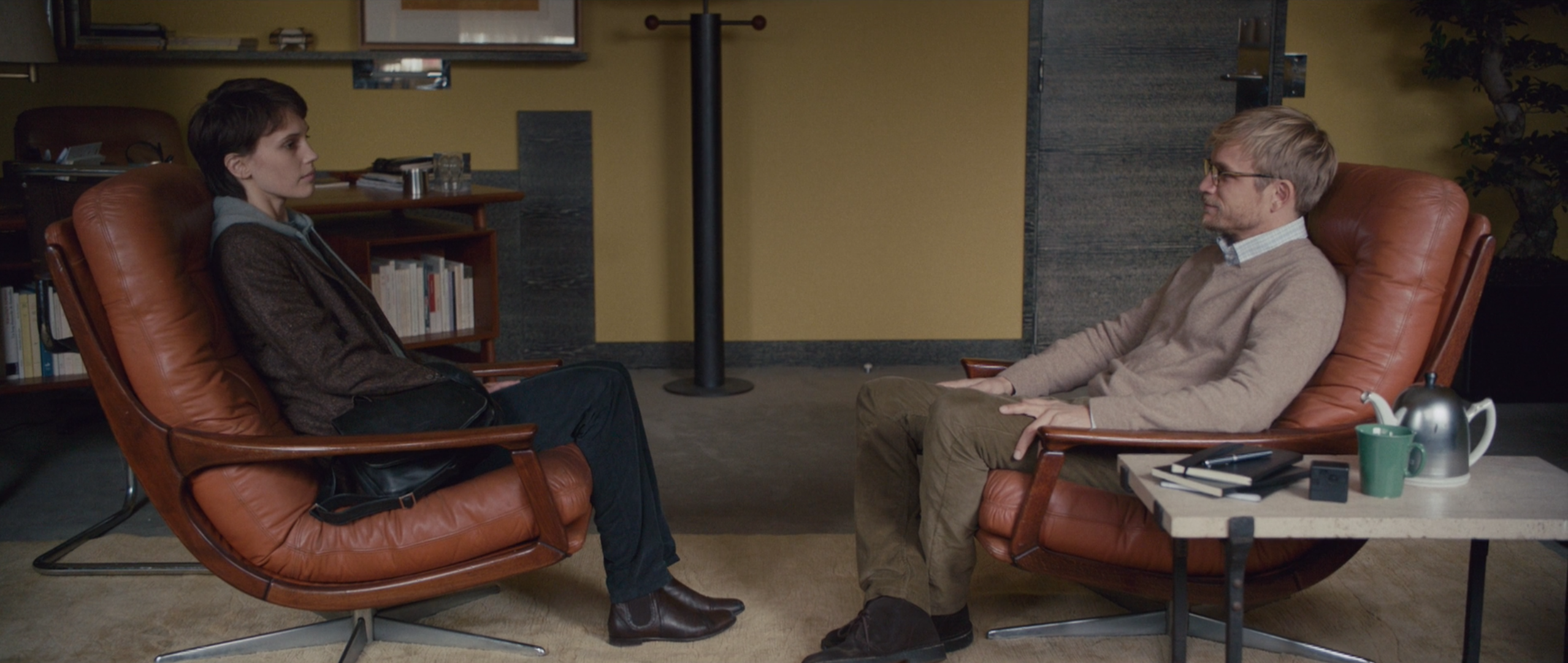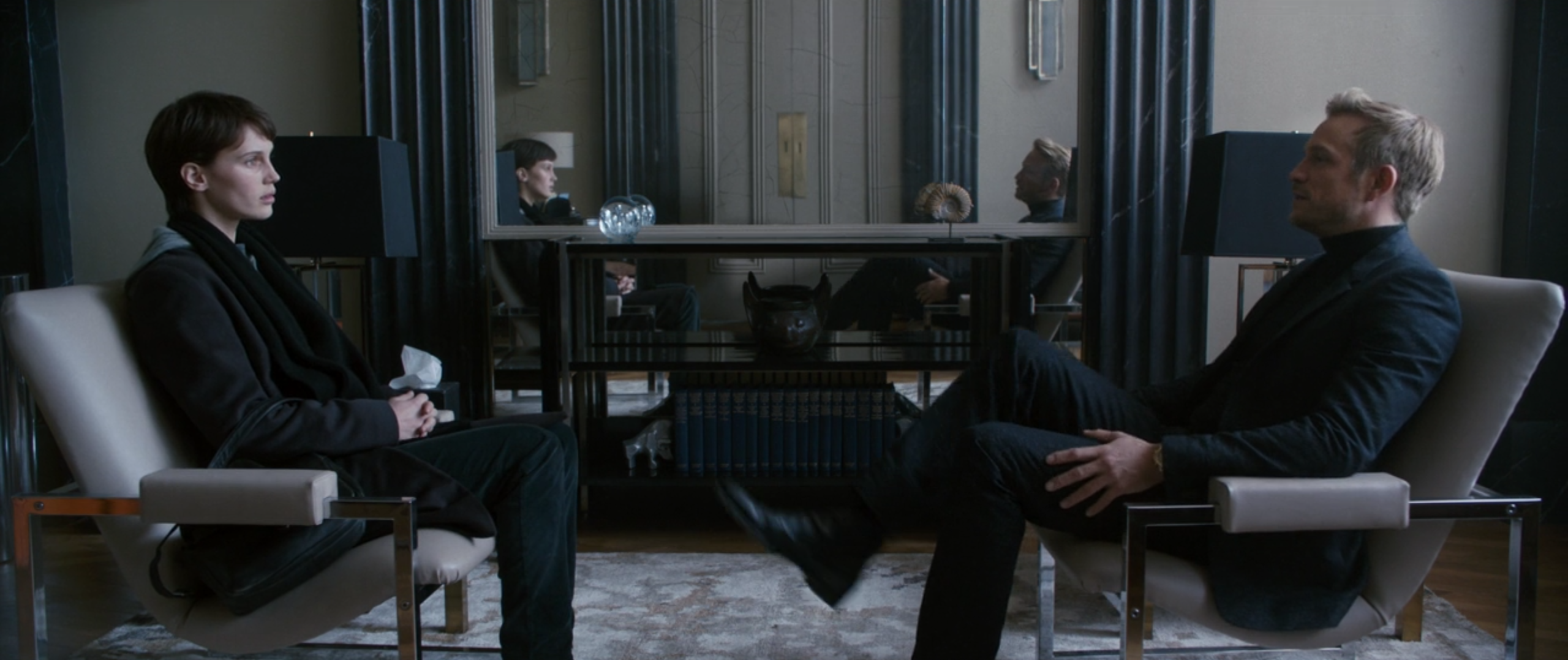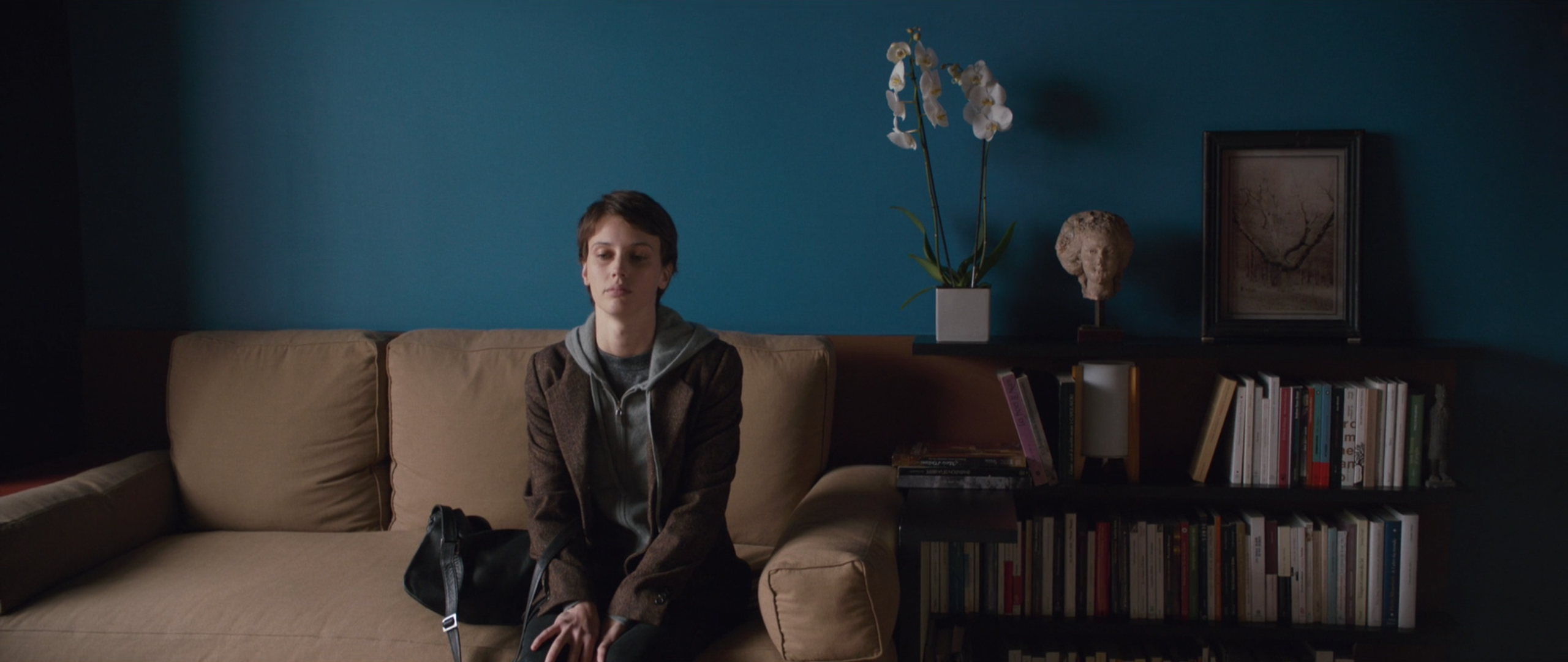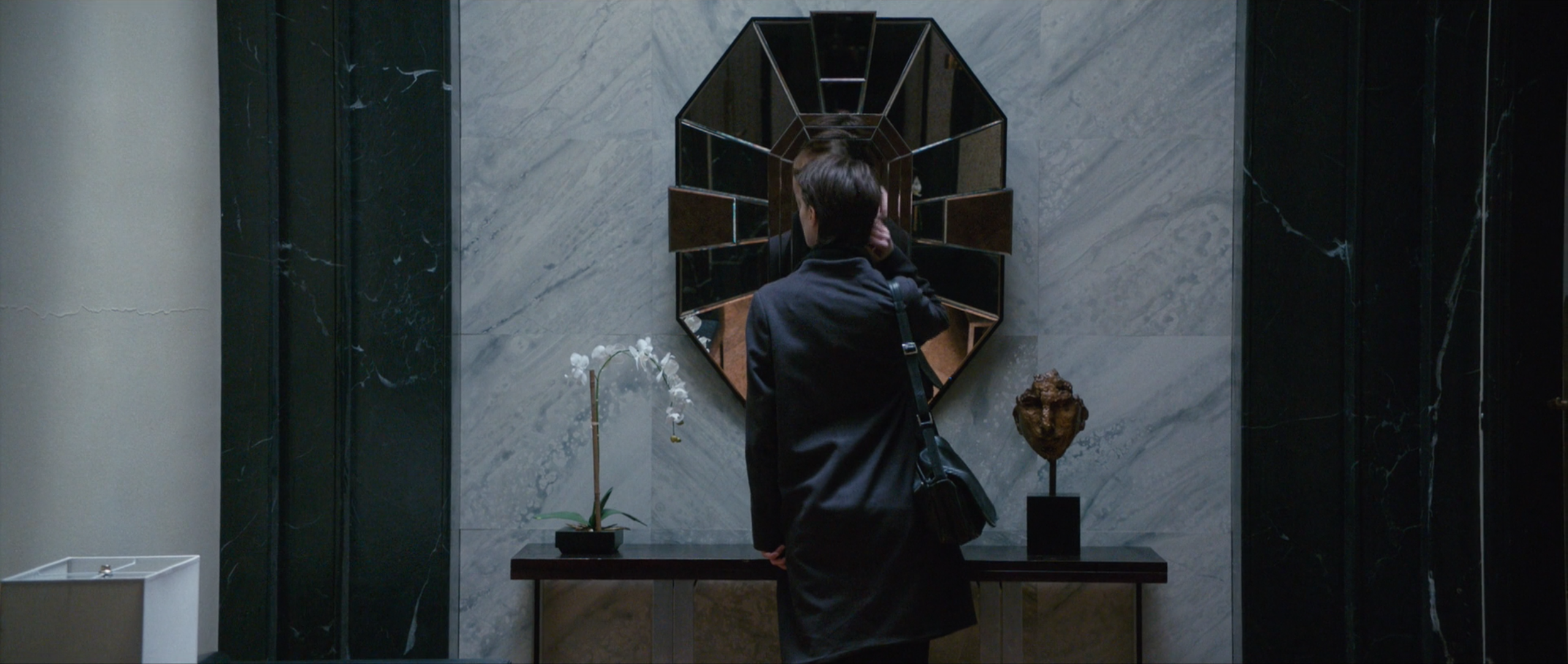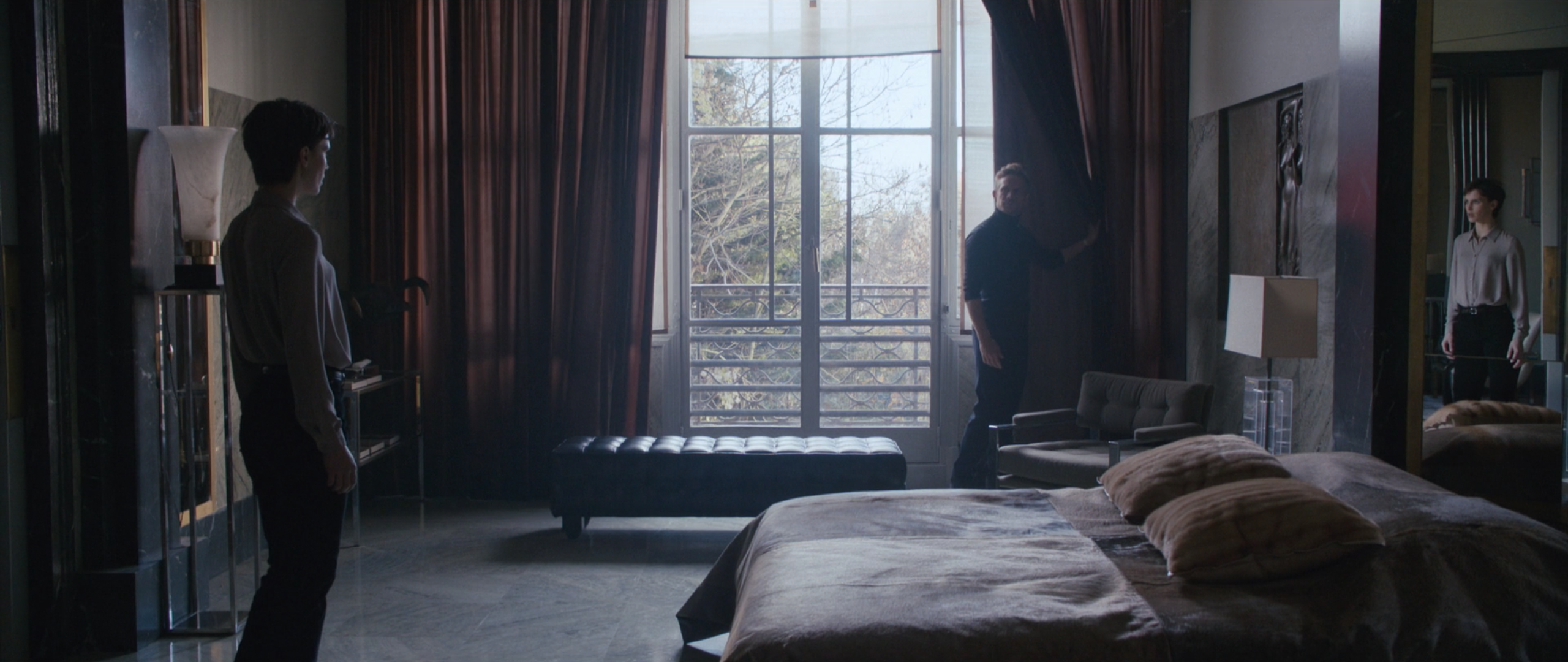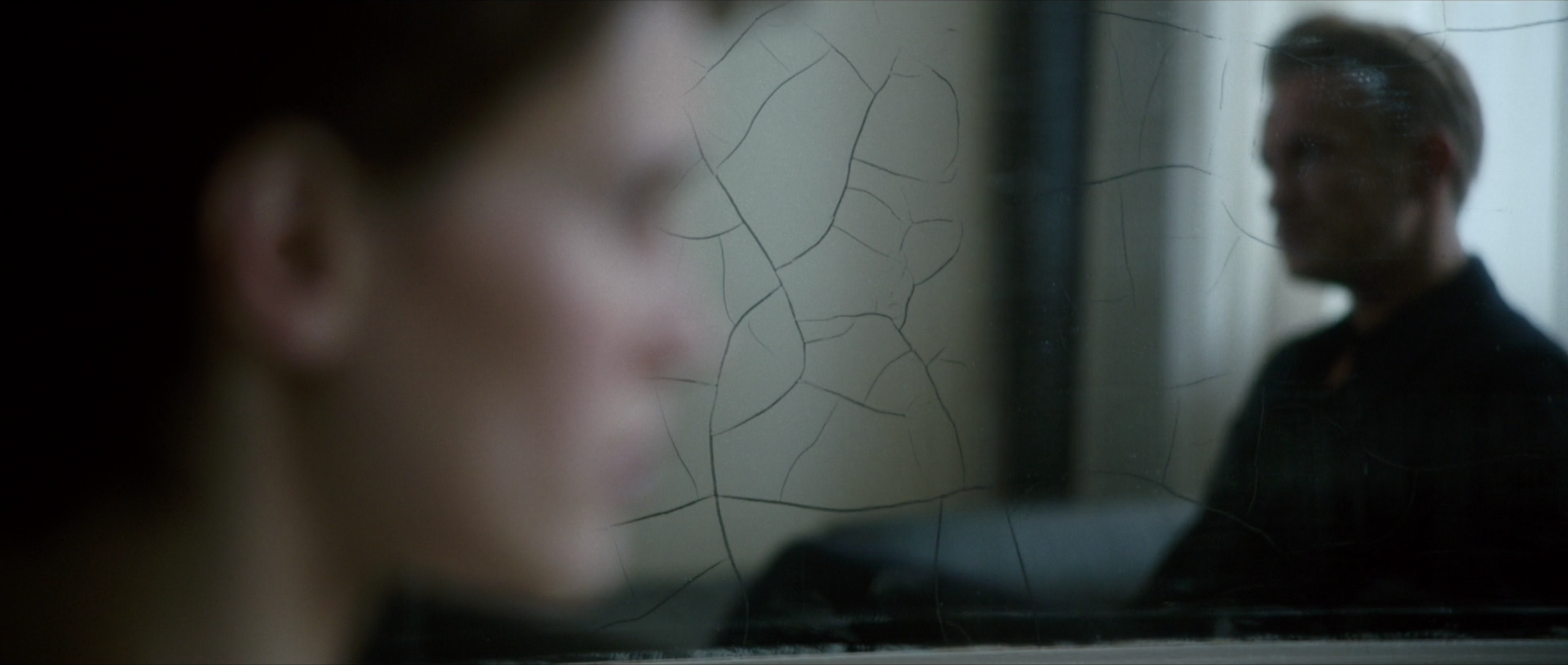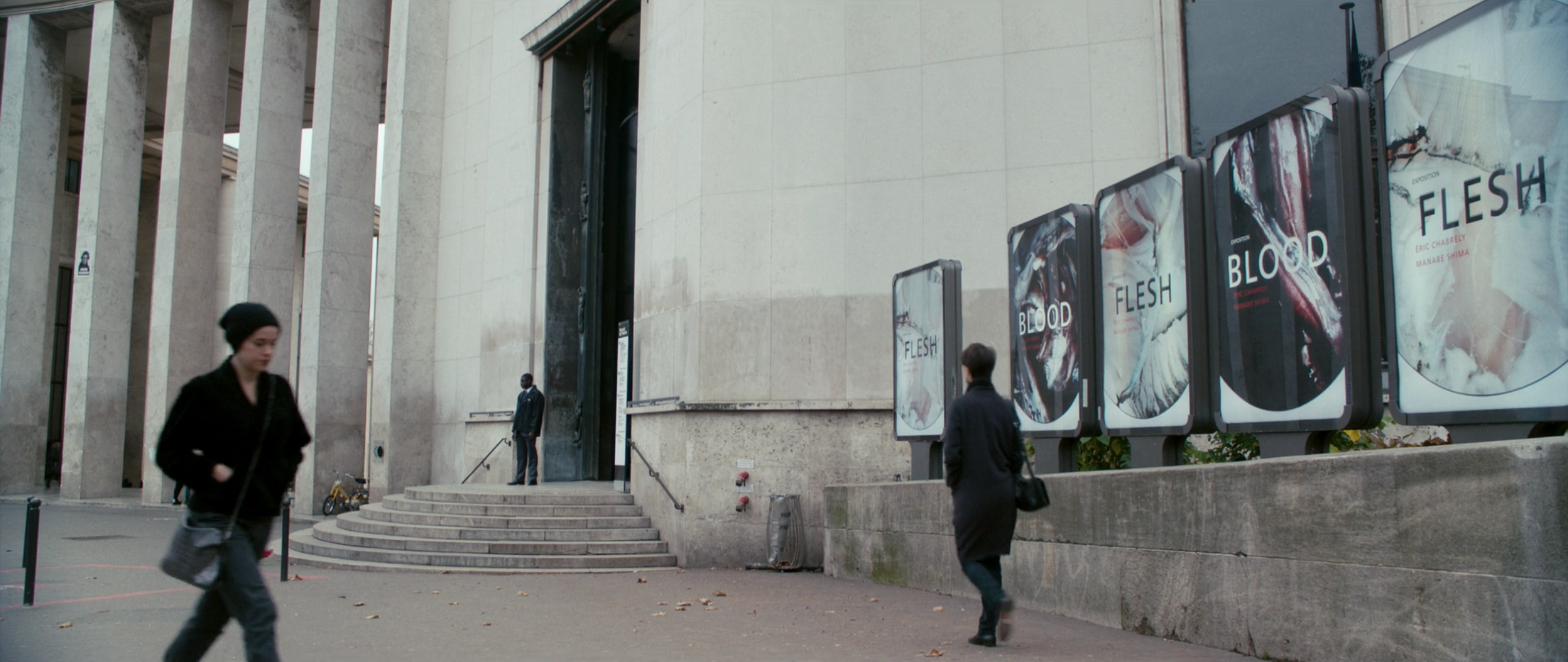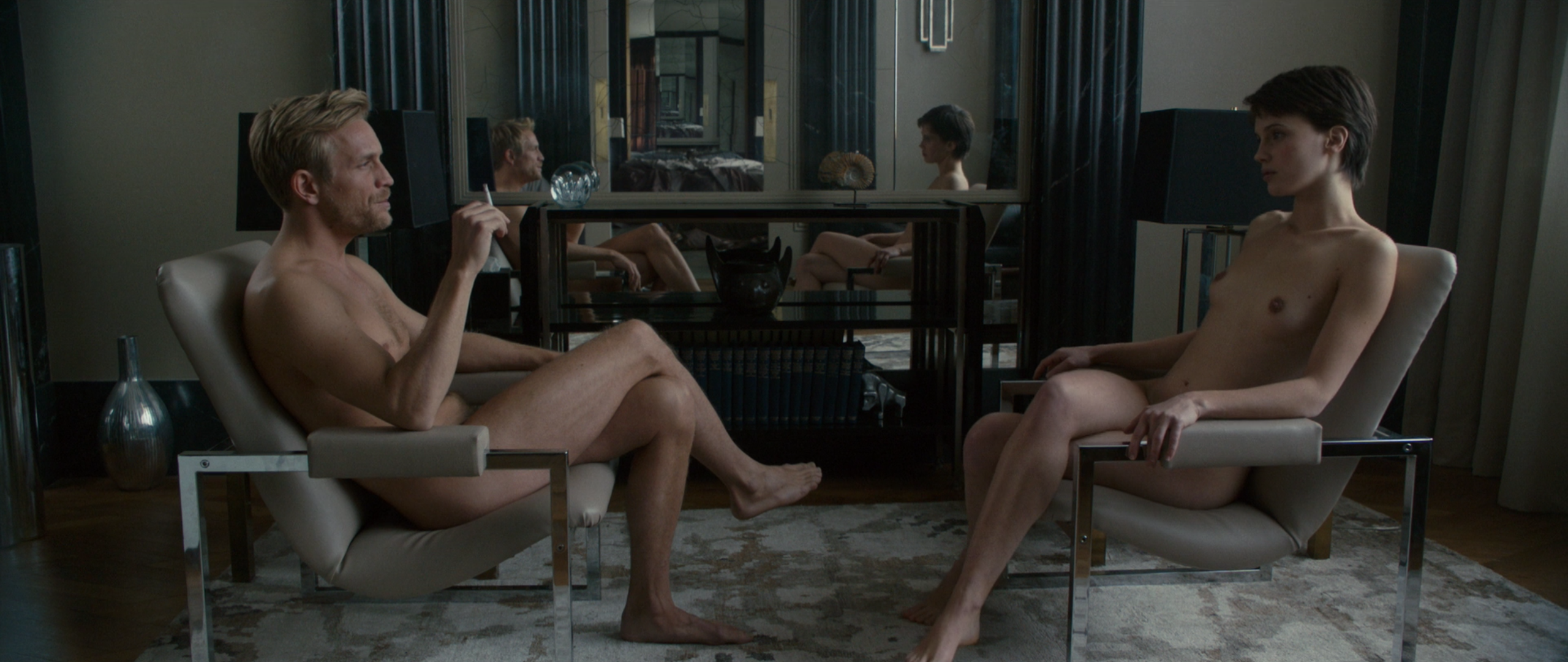 by Daniel Walber
by Daniel Walber
Few things were more inevitable than a Francois Ozon film in which Jérémie Renier makes out with himself, however briefly. It’s the erotic cherry on top of a career of rule-breaking sexual escapades and pastel pastiche. Double Lover often feels like a return to some the director’s early ideas, including the effervescent camp of Sitcom and the throbbing sexual ambition of Criminal Lovers.
Yet this newest feature does at least begin with a grounded plot than these earlier films. Chloé (Marine Vacth) is a young woman with a recurring, potentially psychosomatic stomach problem. Naturally, she goes to therapist, the affable and reassuringly-sweatered Dr. Paul Meyer (Renier). Chloe sinks into one of his welcoming leather chairs, settles her feet on the fuzzy carpet, and tells him her story. The sessions go so well that, before you know it, they’ve moved in together...
But Paul has a secret! He has an evil twin, also a psychiatrist. Dr. Louis Meyer has a much less conventional methodology, at least in Chloe’s case. He’s rude and domineering, bluntly dismissive and very expensive. But she can’t resist, caught up in an increasingly perilous fascination with these estranged twins and their mysterious past.
As you can tell from the images above, Ozon doesn’t rely on Renier alone to drive home the differences between these two men. Production designer Sylvie Olivé, art director Lilith Bekmezian and set decorator Julien Tesseraud play a crucial role in concocting a deliciously unsubtle array of visual cues.
Paul’s office is like wrapping yourself up in one of his sweaters, a fuzzy array of browns and tans that suggest a sort of professorial ASMR sex appeal. His waiting room, meanwhile, combines a big comfy couch with a calm blue wall. A mostly intact bust of a woman sits next to a couple of orchids, pleasant accents to the small bookshelf beneath. It has the air of a rather boring home, rather than that of a doctor’s office.
The alternating black and white marble continues into the office/apartment itself. Even the lamps suggest marble. Its stark palette and occasional inflections of sculpture give one the sense of visiting a Renaissance tomb.
This is a place of profound, violent exploration and explicit emotional warfare. Even the low-lying couch and bed share more of an architectural affinity with a sacrificial altar than any big comfy couch.
